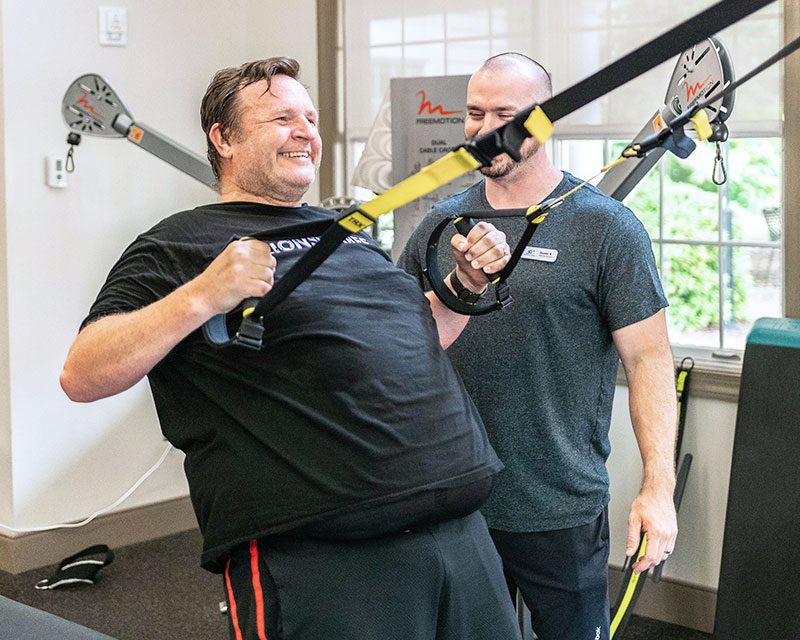We all slip into auto-pilot mode at times throughout our day. When we engage in activities that we have done repeatedly such as eating, driving, or taking a shower, our minds tend to drift and we don’t pay full attention to what we are doing in the moment. We are often preoccupied with the past or thinking about the future, so that we miss what is right in front of us. When we eat while watching TV, checking Facebook, or driving we often get to the end of something with little awareness or enjoyment of what we have eaten. We have not really experienced the food so we are not truly satisfied.
The following 5 tips will help you break free of mindless eating habits:
Pause Before Eating
Whether you are taking time to say a prayer of thanks for your food or a minute or two to focus on your breath, pausing before eating will help you to take a moment to tune into your appetite cues before eating. Pausing, relaxing and letting go of the worries of the day will help you to eat mindfully.
When You Eat, Just Eat
Research (and our own experience) tells us that our caloric intake can skyrocket when we eat while multi-tasking, for example, in front of the TV or computer. A 2006 study published in Physiology and Behavior found a 71% caloric increase when people ate in front of the TV. Designate a place to eat where you won’t be tempted to multi-task and set aside other activities until after you have finished eating. You will not only enjoy your food more, but you will be better able to tune into your body’s response to food, for example noticing how full you are getting, therefore upping the chances that you will make choices about how much to eat based on your internal signals rather than external cues (like the end of a TV show).
Be Strategic About Food Placement
Studies have shown that where you keep food dramatically affects your eating habits. Foods kept in plain view are much more likely to be eaten mindlessly. Conversely, having healthy foods in plain view increases the likelihood that you will eat them. We gravitate towards foods that are convenient and easy to access. In one study, (Wansick, 2006) candy jars of chocolate were placed in office worker’s cubicles for a month. Then the jars were moved six feet away. The office workers ate five more candies a day when the jars were closer. That adds up to an additional 125 calories a day!
Slow down and Taste Your Food
The only time you can taste your food is when it is in your mouth, but we often focus on the next bite (if we are focused on the food at all) and rush the process so that we barely taste what we are eating. Some effective strategies for slowing down your eating include:
- putting your utensil down between bites
- checking in with your body periodically to determine how full you are getting
- making sure that you are chewing your food thoroughly before swallowing
If you are having a lot of difficulty slowing down, try eating with your non-dominant hand. Feeling full is a result of your brain reacting to chemicals that are released when you eat. It takes about 20 minutes to get this signal, so try to allow at least this long for your meals in order to get this signal while you are still eating. If you have difficulty stopping when full you can still benefit from slowing down. You may realize that you are not really enjoying the food and you have the opportunity to break the auto-pilot mode. Another benefit of slowing down is that foods that move through the mouth more slowly don’t need as many enhancements (salt, sugar, fat) to satisfy.
Monitor Your Emotions
We often reach for food automatically when we’re upset, bored or stressed. By monitoring your emotions you start to learn which emotions trigger a desire to eat and you are better able to give yourself the opportunity to figure out what you really need when you are emotionally driven to eat. Perhaps you need rest, a brisk walk, support from a friend, non-food related comfort, or encouragement. Remember that if you keep unhealthy convenience foods out of your immediate environment it will be easier to resist the urge to eat mindlessly when you have an emotionally-driven craving.
These are just a few strategies we can use to break free of many of our mindless eating habits. By pausing before eating, slowing down and focusing on the sensory experience of our food, thinking strategically about our food environment, and monitoring our emotions we can start to chip away at our mindless eating habits, and at the same time learn to enjoy our food more.
You might also like: Do You Eat on Autopilot?, Tools for Reducing Emotional Eating
References
Albers, Susan, Psy.D. (2008). Eat, Drink, and be Mindful. New Harbinger Publications, Inc.
Chozen-Bays, MD. (2009). Mindful Eating: A Guide to Rediscovering a Healthy and Joyful Relationship with Food. Shambhala.
Wansick, Brian, PhD.(2006). Mindless Eating: Why We Eat More Than We Think. Bantam Dell.






